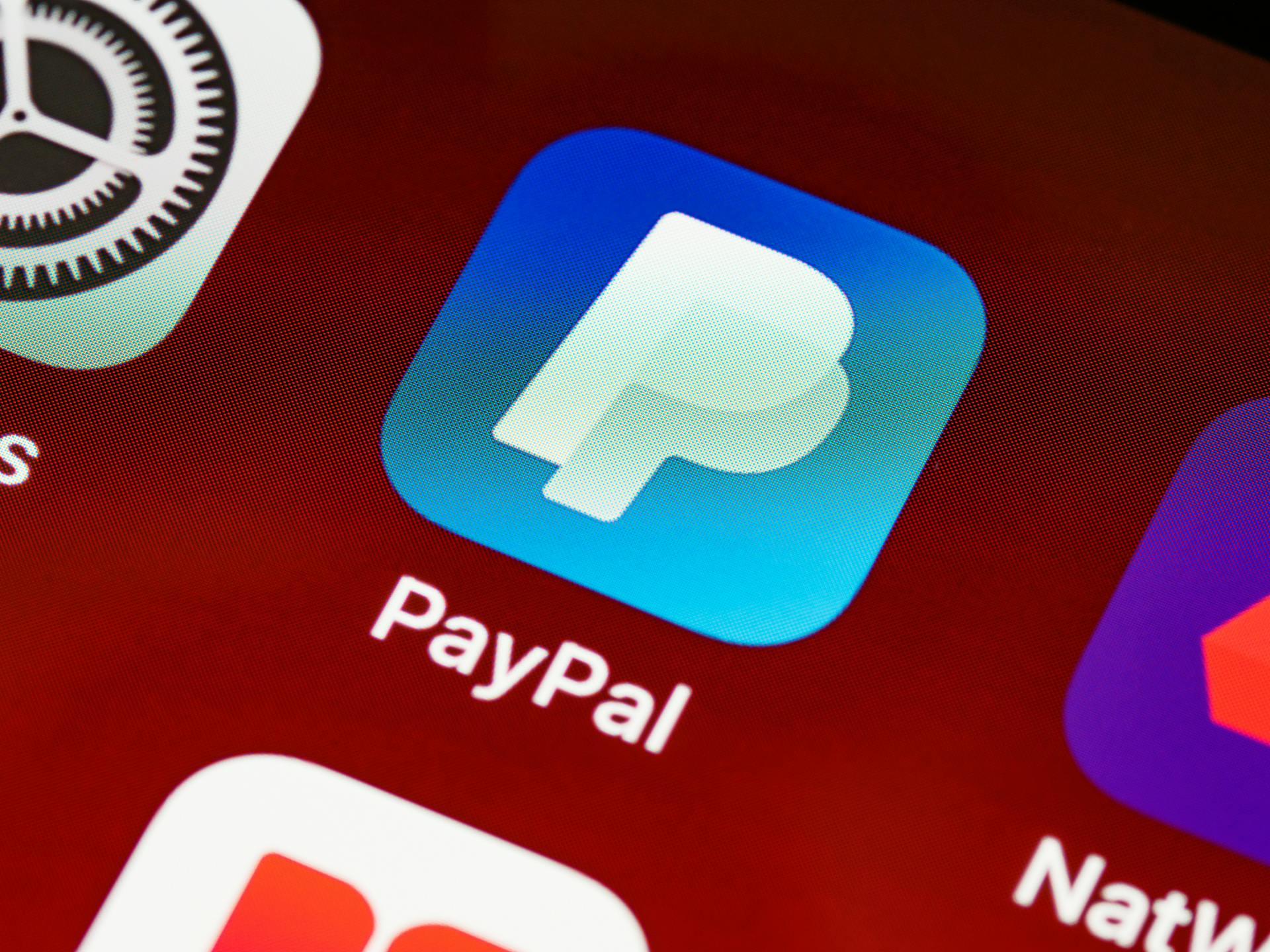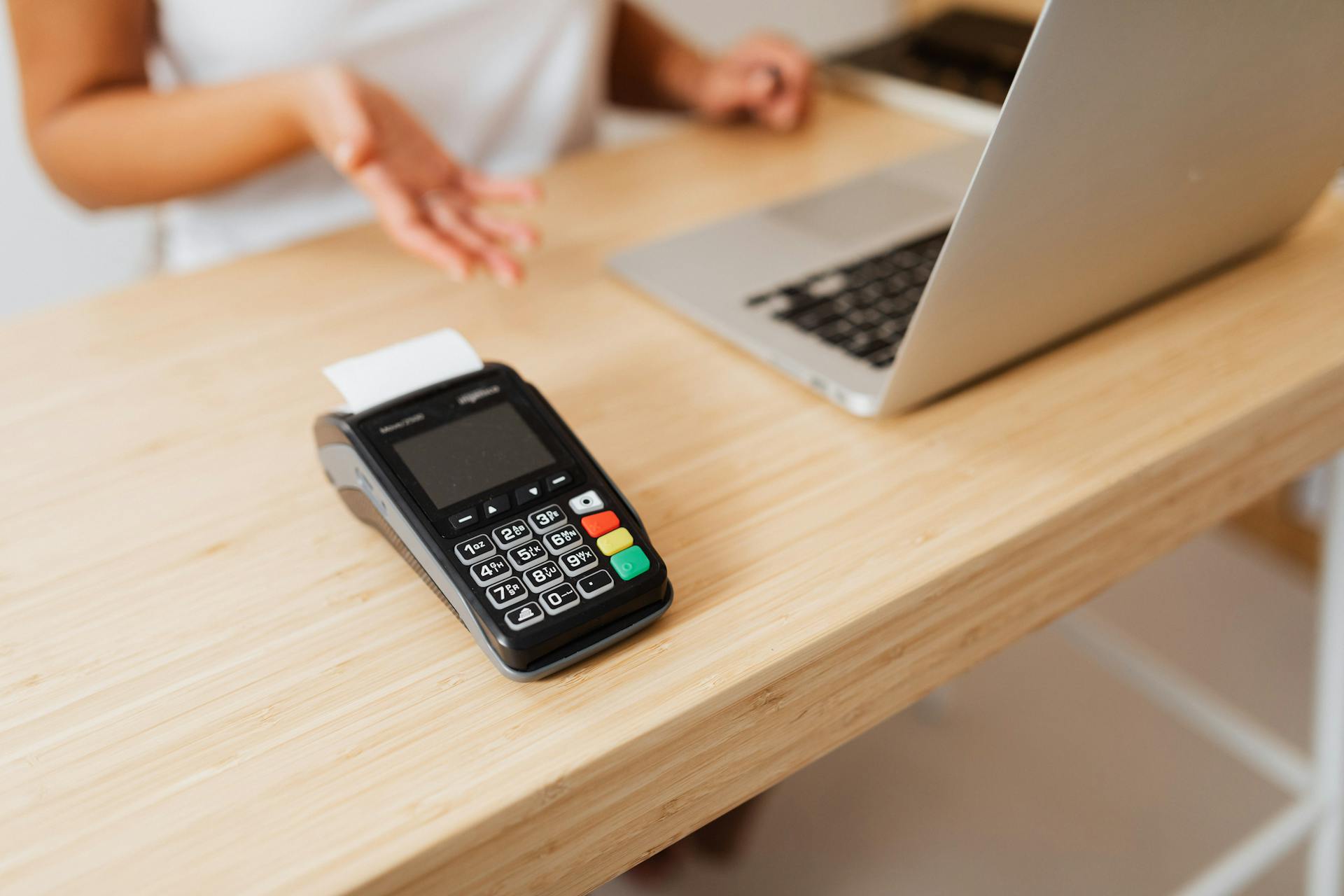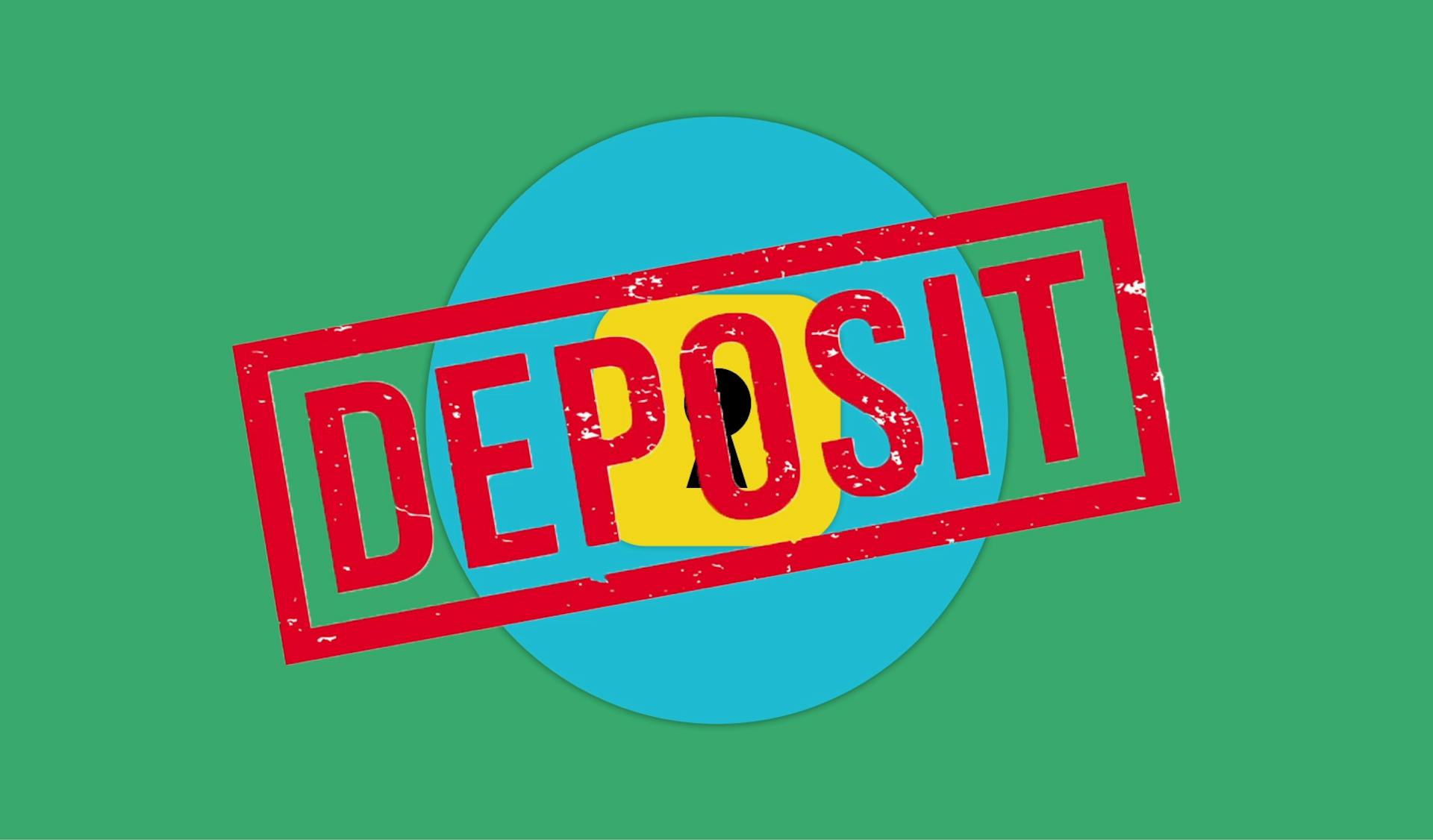
IMPS is a game-changer for instant transactions, allowing users to send and receive money 24/7.
It was launched in 2010 by the National Payments Corporation of India (NPCI), revolutionizing the way we make payments.
The service is available on a wide range of platforms, including mobile banking apps, internet banking, and ATMs.
Any bank account holder can use IMPS to make transactions, as long as their bank is a part of the NPCI network.
IMPS transactions are processed in real-time, with a maximum settlement time of 2 hours.
You might like: Online Real Time Bill Payment
What Is Immediate Payment Service?
Immediate Payment Service, or IMPS, is a payment service that allows for instant money transfer online. It's available 24x7, including Sundays and bank holidays.
IMPS is developed by the National Payments Corporation of India (NPCI). The service can be availed through various methods such as mobile, internet, ATM, and SMS.
IMPS is a real-time and secure money transfer system that allows for instant money transfer. It's controlled by NPCI and has a significant history of development.
Here are some key milestones in IMPS development:
- August 2010: NPCI conducted a pilot study on mobile payment systems with various banks.
- September 2010: Yes Bank joined the project.
- October 2010: Axis Bank joined the project.
- November 2010: HDFC Bank joined the project.
- 22 November 2010: IMPS was publicly launched by Shyamala Gopinath, DG at RBI, Mumbai.
IMPS has been implemented by more than 150 banks across the country.
Features and Benefits
IMPS is available 24/7, so you can send money at any time, from anywhere. This means you can transfer funds instantly, even on public and bank holidays.
IMPS is a versatile service that can be used for various purposes, such as bill payments, online shopping, fee payments, and insurance premium payments. You can even use it to pay for transport and ticketing, and school fees.
To use IMPS, you only need an internet connection on your mobile or computer. You can also use it through ATM and SMS if you don't have an internet connection. This makes it a convenient and easy-to-use service.
IMPS is a secure service, protected through mechanisms such as encryption and firewalls. This means your transactions are safe from all attacks, and you can transact hassle-free.
Take a look at this: Online Sbi Internet Banking Kit
Here are some of the key features of IMPS:
- Instant transfer of funds (24 hours a day, seven days a week, including weekends and holidays)
- Transactions can be initiated through a variety of channels (net banking, mobile banking, ATM, and SMS)
- Uses a unique identifier called Mobile Money Identifier (MMID) or Account Number and Indian Financial System Code (IFSC)
- IMPS is convenient and user-friendly
- Provides instant credit and debit notices to the sender and receiver
- Can be used for P2M (Person to Merchant) payments
- Can be used to pay for various purposes, such as bill payments, online shopping, fee payments, and insurance premium payments.
Using Internet and Mobile Banking
To use Internet Banking, log in to your bank's portal and add a beneficiary by entering their details such as name, bank account number, bank name, and IFSC code. The activation time may vary depending on your bank.
You can also use Mobile Banking, which requires installing the mobile banking application from a trusted source and logging in with your credentials. Once you've added a beneficiary, you can send money using the funds transfer option.
To add a beneficiary, you'll need to enter their name, bank account number, bank name, and IFSC code, and verify the details. This process may take some time, so be patient.
Once the beneficiary is activated, you can select them and enter the amount to be transferred. You'll receive a confirmation when the transfer is complete, along with a transaction ID for future reference.
Curious to learn more? Check out: Ifsc Code for Union Bank
Here's a comparison of the steps for Internet Banking and Mobile Banking:
Note that the activation time may vary depending on your bank, and it's essential to have mobile banking services while using IMPS for fund transfers.
How It Works and Transaction Limits
IMPS transactions follow a specific procedure for processing. The banks involved must be registered with the National Financial Switch (NFS) to ensure safe and secure transactions.
The procedure involves the sender's bank debiting the sender's account with the transaction amount, sending a secure message to the receiver's bank, and the receiver's bank crediting the receiver's account with the amount. This process happens in 3 cycles per working day, with the mechanism of RTGS for every cycle.
The daily limit for IMPS transactions is ₹5 lakhs per user per account per day, subject to the availability of funds in the user's account. This limit helps prevent fraudulent transactions and ensures the servers are not flooded with requests.
Here are some banks with their IMPS charges:
How It Works
To use IMPS, you need to register for mobile banking or internet banking service with your bank. They'll provide you with a Mobile Money Identifier (MMID) and mobile banking personal identification number (MPIN).
The sender's bank debits the sender's account with the amount being sent when the transaction is initiated. This ensures that the funds are available for transfer.
The sender's bank then sends a secure message to the receiver's bank, which credits the receiver's account with the amount sent. This process happens quickly and securely.
IMPS transactions require the sender to have the bank account number and the receiving bank's IFSC code. This information is necessary to complete the transaction.
Net settlements between the sending and receiving bank are done in 3 cycles per working day. This helps to ensure that transactions are settled efficiently and accurately.
Here's a breakdown of the IMPS transaction process:
- The sender's bank debits the sender's account.
- The sender's bank sends a secure message to the receiver's bank.
- The receiver's bank credits the receiver's account.
- Net settlements between the sending and receiving bank are done in 3 cycles per working day.
Transaction Limits
IMPS transactions have a daily limit of ₹5 lakhs per user per account per day, as imposed by the Reserve Bank of India for security reasons.
Worth a look: How Much Do Master Plumbers Charge per Hour
The minimum amount that can be transferred using IMPS is ₹1, which is a relatively low threshold, making it accessible for small transactions.
Here are some banks with their respective IMPS charges:
IMPS transactions are subject to the availability of funds in the user's account, and the servers are not flooded with requests, ensuring that every user can do the transaction effortlessly.
The daily limit of IMPS is ₹5 lakhs per person per account per day, as specified in RBI guidelines.
Transfer and Payment Requirements
To transfer money using IMPS, you'll need a mobile banking or internet banking account, or access to a bank ATM. This is a straightforward requirement, and most banks offer these services.
To initiate an IMPS transfer, you'll need to provide the bank account number and IFSC code or MMID of the receiver. This information is essential for the transfer to go through.
Here's a quick rundown of the transfer requirements:
- Sender's mobile banking or internet banking credentials
- Bank account number and IFSC code or MMID of the receiver
These requirements are in place to ensure secure and efficient transactions.
Transfer Requirements

To make an IMPS transfer, you'll need a few things. You'll need mobile banking or internet banking credentials, or access to a bank ATM. This is the first requirement for an IMPS transfer.
You'll also need the bank account number and IFSC code or MMID of the receiver. This is a crucial piece of information that ensures the transfer is made to the right person.
To make an IMPS transfer, you can use either Internet banking, mobile banking, or a Pre-Paid Payments instrument issuer (PPI).
Here are the channels through which you can make an IMPS fund transfer:
- Mobile Banking: Send money with the recipient’s mobile number linked to a bank account and a seven-digit MMID number
- Net Banking: With beneficiary’s account number and IFSC code, you can easily send money online
- Bank’s ATM: ATMs allow you to transfer money, given that you have the beneficiary’s mobile number and MMID
- SMS: Send a text based on the bank’s prescribed format using the beneficiary’s MMID number to initiate a fund transfer
To initiate an IMPS transfer, you'll need to provide the required beneficiary details, such as name, registered mobile number, beneficiary MMID, and the amount to be transferred.
Applicable on a 1 Lakh Transfer
IMPS charges are applicable on transfers, and for a transfer of 1 lakh, you'll incur a charge of Rs. 15.
The charge is applicable from 1 lakh to 2 lacs, which indicates a specific range for the IMPS fee.
This means that if you transfer exactly 1 lakh, you'll be charged Rs. 15, but if you transfer a smaller amount, you won't be charged the IMPS fee.
A fresh viewpoint: International Money Wire Transfer Fee
Frequently Asked Questions
Which is better, IMPS or NEFT?
For instant transfers, choose IMPS, which credits funds immediately. If speed isn't a priority, consider NEFT, which is a cost-effective option with transfers credited after 2 hours.
How do I send an immediate payment?
To send an immediate payment, go to the payments menu and follow the steps to choose a beneficiary and enter the payment details. Select "Pay this amount immediately" to complete the transaction.
Sources
- https://www.geeksforgeeks.org/immediate-payment-service-imps-full-form-features-procedure-and-charges/
- https://groww.in/banking/what-is-imps
- https://www.kotak.com/en/digital-banking/insta-services/immediate-payments.html
- https://www.fibe.in/blogs/what-is-imps-charges-meaning-steps/
- https://navi.com/blog/imps-full-form/
Featured Images: pexels.com


